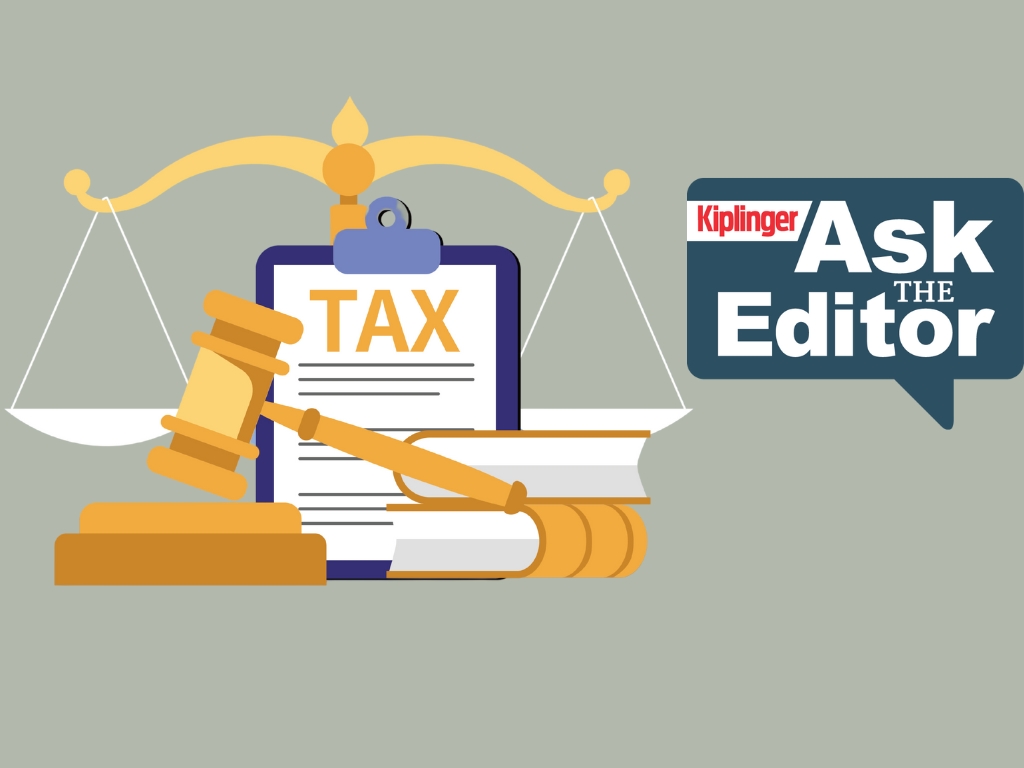Ask the Editor: Reader Questions, April 25 — 529 plans
In our Ask the Editor series, Joy Taylor, The Kiplinger Tax Letter Editor, answers questions related to 529 plans.

Each week, in our Ask the Editor series, Joy Taylor, The Kiplinger Tax Letter Editor, answers questions on topics submitted by readers. This week, she’s looking at five questions on 529 college savings plans. (Get a free issue of The Kiplinger Tax Letter or subscribe.)
Q1: Unused Funds
We funded a 529 college savings plan for my son. We used money in the account for his college. He is now done with school, and there are still unused funds in the 529 account. What can we do with this money without paying tax on it?
If you funded a 529 plan, and the beneficiary decides not to go to college, or he or she did go to college, and there are funds remaining at the end, there are several tax-free options for using the leftover money:
- Keep the funds in the account for the beneficiary’s grad school, etc.
- Use the 529 money to pay for certain apprentice programs for the beneficiary.
- Roll over leftover funds to a 529 plan for another family member’s education needs.
- Use up to $10,000 to help pay off the beneficiary’s college debt. It’s important to note that this $10,000 is a lifetime limit, not an annual limit. 529 distributions for student loan repayments that exceed $10,000 are taxable in part to the extent of the excess and are also subject to a 10% penalty.
- Roll over funds from a beneficiary’s 529 plan to an ABLE account for a disabled beneficiary or the beneficiary’s disabled siblings.
- Some excess 529 funds can be transferred tax-free to a Roth IRA for the 529 beneficiary in a direct trustee-to-trustee transfer. There are key rules to meet: The 529 account must have been open for at least 15 years, with the same beneficiary. There is a $35,000 lifetime cap. 529 contributions made in the prior five years are ineligible for the transfer. And annual 529 distributions for this purpose can’t exceed the annual contribution limit for Roth IRAs, which is $7,000 in 2025.
Note that any actual contributions for the year made to any IRA owned by the beneficiary count against this limit. For example, let’s say a 529 plan beneficiary contributes $2,000 to his traditional IRA in 2025. Only $5,000 of leftover 529 funds can be transferred to his Roth IRA in 2025.
— Joy Taylor, Editor The Kiplinger Tax Letter

Sign up for Kiplinger’s Free E-Newsletters
Profit and prosper with the best of expert advice on investing, taxes, retirement, personal finance and more - straight to your e-mail.
Profit and prosper with the best of expert advice - straight to your e-mail.
Q2: Off-Campus Housing
My daughter is currently a sophomore in college. Next year, she and some friends are planning to live in an apartment off-campus. Can I use 529 funds to pay for her share of the rent, utilities and food?
Distributions from 529 plans used for college are tax-free. Eligible expenses include the cost of room and board for students enrolled at a college or university at least half-time, tuition, books, supplies, fees, computers and internet access. 529 funds can be withdrawn tax-free to cover off-campus housing, food and utilities, but the distribution amount cannot exceed the room and board allowance that the college includes in the cost of attendance. You should be able to get this figure from the college’s website.
— Joy Taylor, Editor The Kiplinger Tax Letter
Q3: Study Abroad
Can I use 529 funds to pay for a college student’s studies abroad?
In many cases, yes. A 529 plan can be used for any college that participates in the U.S. federal student aid program. If a student is enrolled in a U.S. college and chooses to study abroad through the school’s program for a semester or two, the study-abroad program will be 529-eligible, provided the U.S. college is eligible and the college accepts the study-abroad credits. If the child decides to enroll in a non-U.S. college for his or her full college education, then that foreign university must participate in the U.S. federal student aid program. Believe it or not, many foreign colleges do participate and would therefore qualify as eligible schools for 529 purposes.
— Joy Taylor, Editor The Kiplinger Tax Letter
Q4: Funding a 529 Plan
I am currently taking required minimum distributions (RMDs) from my traditional IRA. Can I roll over part of that RMD tax-free to fund a 529 plan for my granddaughter?
Unfortunately, there is no tax-efficient way to use money in your IRA to fund a 529 plan. So, for example, if you want to use your RMD money to put into a 529 account for your granddaughter, you will be treated as first receiving the RMD, which would be all or partially taxable to you, and then making a post-tax contribution to the 529 plan.
— Joy Taylor, Editor The Kiplinger Tax Letter
Q5: Refund from the University
I used 529 funds to pay for my son’s college tuition and board. My son received a check from the college refunding some of the amount that was paid. Is that amount taxable to me?
The tax laws give relief in this situation, provided you act in a timely manner. Tax legislation enacted in 2015 waives tax and penalties if, after a distribution is made from a 529 account, the student gets a refund from the college or university. To qualify for relief, you generally must redeposit the funds into the 529 account for the same beneficiary within 60 days. The recontribution is treated as principal.
— Joy Taylor, Editor The Kiplinger Tax Letter
We have already received many questions from readers on topics related to annuities, health savings accounts and much more. We’ll answer some of these in a future Ask the Editor round-up. So keep those questions coming!
Subscribers of The Kiplinger Tax Letter and The Kiplinger Letter can ask Joy questions about a tax topic. You'll find full details of how to submit questions in The Kiplinger Tax Letter and The Kiplinger Letter. (Subscribe to The Kiplinger Tax Letter or The Kiplinger Letter.)
Not all questions submitted will be published, and some may be condensed and/or combined with other similar questions and answers, as required editorially. The answers provided by our editors and experts, in this Q&A series, are for general informational purposes only. While we take reasonable precautions to ensure we provide accurate answers to your questions, this information does not and is not intended to, constitute independent financial, legal, or tax advice. You should not act, or refrain from acting, based on any information provided in this feature. You should consult with a financial or tax advisor regarding any questions you may have in relation to the matters discussed in this article.
Read more
- Ask the Editor, April 18, 2025: Questions about amended returns
- Ask the Editor, April 11, 2025: Questions about IRAs, RMDs and PTPs.
- Ask the Editor, April 4, 2025: Questions about the new tax bill, estate tax, and muni bonds.
- Ask the Editor, March 28, 2025: Questions about filing tax returns, QBI deductions, and estimated tax payments.
- Ask the Editor, March 21, 2025: Questions on reporting income and deductions.
Get Kiplinger Today newsletter — free
Profit and prosper with the best of Kiplinger's advice on investing, taxes, retirement, personal finance and much more. Delivered daily. Enter your email in the box and click Sign Me Up.

Joy is an experienced CPA and tax attorney with an L.L.M. in Taxation from New York University School of Law. After many years working for big law and accounting firms, Joy saw the light and now puts her education, legal experience and in-depth knowledge of federal tax law to use writing for Kiplinger. She writes and edits The Kiplinger Tax Letter and contributes federal tax and retirement stories to kiplinger.com and Kiplinger’s Retirement Report. Her articles have been picked up by the Washington Post and other media outlets. Joy has also appeared as a tax expert in newspapers, on television and on radio discussing federal tax developments.
-
 Stock Market Today: Tesla Drags on Stocks Amid Musk-Trump Feud
Stock Market Today: Tesla Drags on Stocks Amid Musk-Trump FeudSentiment has soured between President Trump and his once-loyal ally, Tesla CEO Elon Musk.
-
 7 Rules Frequent Flyers Swear By
7 Rules Frequent Flyers Swear ByFrom dodging long lines to avoiding bad coffee, these clever travel rules can help you save time, stay healthy and reduce stress every time you fly.
-
 Tax Rule Change Could See Millions Lose Health Insurance
Tax Rule Change Could See Millions Lose Health InsuranceThe Kiplinger Tax Letter If current rules for the health premium tax credit (PTC), a popular Obamacare subsidy, aren't extended, 3.7 million people could lose their health insurance.
-
 Energy-Efficiency Credits — Get’ Em While You Can
Energy-Efficiency Credits — Get’ Em While You CanGreen energy-efficiency credits are on the chopping block. These tax credits can be valuable, but you should upgrade your home sooner rather than later.
-
 Ask the Editor, May 30: Questions on the One Big Beautiful Bill
Ask the Editor, May 30: Questions on the One Big Beautiful BillAsk the Editor In this week's Ask the Editor Q&A, we answer tax questions from readers on the House-passed “One Big Beautiful Bill.”
-
 How to Appeal a Health Insurance Denial
How to Appeal a Health Insurance DenialIf your insurer refuses to pay for a treatment or procedure that you believe should be covered, use our guide to appeal.
-
 Ask the Editor, May 23: Reader Questions on Gifts, Estate Tax
Ask the Editor, May 23: Reader Questions on Gifts, Estate TaxIn this week's Ask the Editor Q&A, we answer tax questions from readers on gifts, the estate tax and stepped-up basis upon death.
-
 Our Annual Grandparents’ Guide to Today’s Pop Artists
Our Annual Grandparents’ Guide to Today’s Pop ArtistsIf you grew up loving Dylan, Coltrane or other great artists, here are some modern musicians that tap into similar styles and spirits. Check out our playlist.
-
 Thinking About Buying a Boat? 10 Things to Know First
Thinking About Buying a Boat? 10 Things to Know FirstPlanning on buying a boat in retirement? Think of it as a hole in the water you dump money into, says one expert. But it's not all bad.
-
 Ask the Editor, May 16 — Reader Questions on Capital Gains
Ask the Editor, May 16 — Reader Questions on Capital GainsIn our latest Ask the Editor round-up, Joy Taylor, The Kiplinger Tax Letter Editor, answers three questions from readers on capital gains.